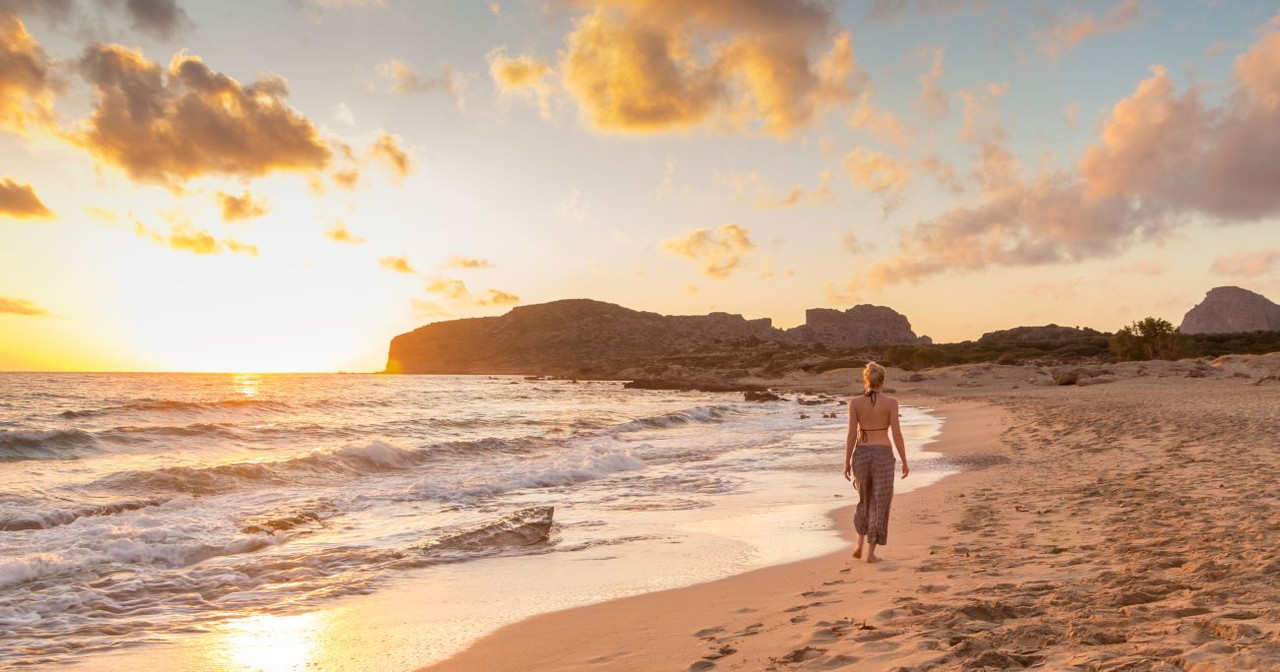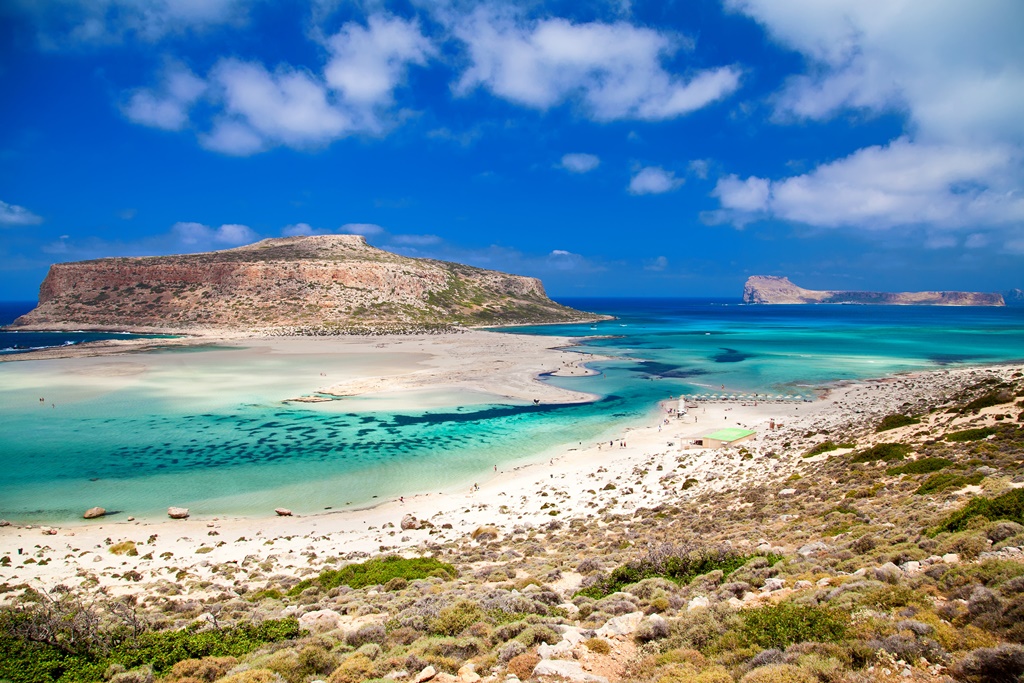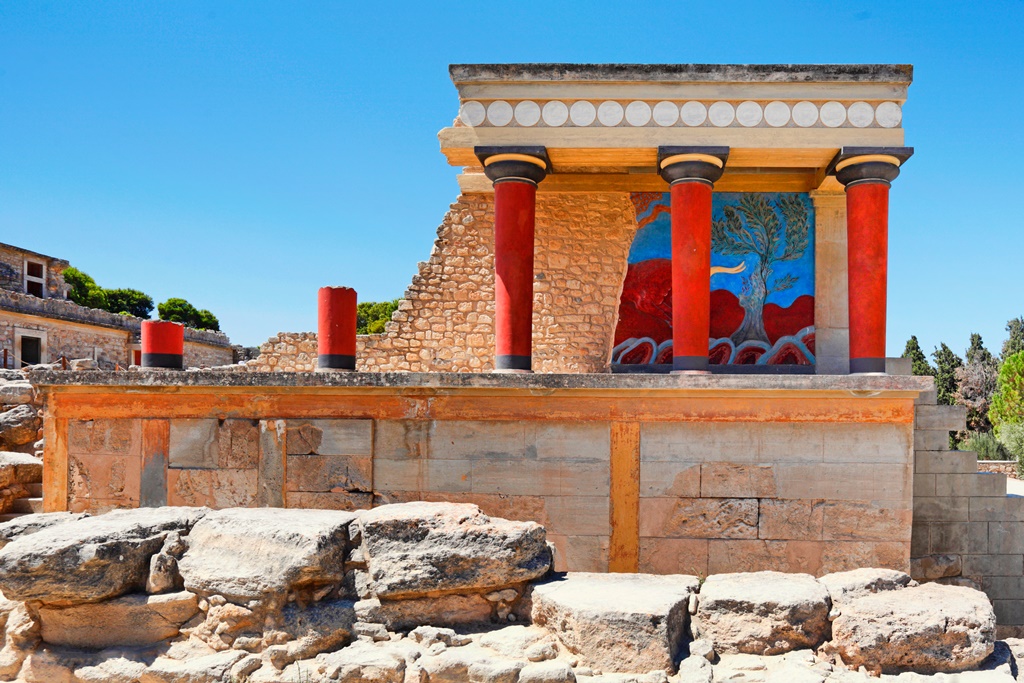Most popular experiences
Departing from the port of Kissamos and while sailing, you will admire a huge cave, that is believed to have been the ancient shipyard of “Tarsanas”. At the end of the Gulf you will notice an impressive geological phenomenon where, as a result of the passage of time, the western part of the island is rising, while the eastern part is sinking. This phenomenon was mainly created by catastrophic earthquakes that took place in 66 BC and 365 BC. According to scientific estimates, this geographical phenomenon still continues today, but at a much slower rate.
After approximately 1 hour, the boat arrives at the port of Gramvousa. The island's eminent castle was built by the Venetians in 1579 at the highest point of the island, on top of a steep rock at a height of 137m. It is surrounded by a wall of 272m. It has a rough triangular shape and each side is 1km in length. Gramvousa castle played an important role in the history of the region. The panoramic view, its majesty and the legend of the pirate's hidden treasure, will tempt you to visit it. The walk takes approximately 20 minutes.
TIP!! You should first visit the Castle in Gramvousa and then swim in the cool water…!
Following the 2 hour visit to Gramvousa, the boat will depart for the lagoon of Balos, a journey of approximately 15 minutes. As there is no harbour at the lagoon, the boat will either drop anchor in the cove of Gramvousa (Tigani), about 200m from the beach, at a depth of approximately 4m, where disembarkation will take place from large boats, or approach the beach where disembarkation can take place directly onto the beach. Your stay at the lagoon, where you can enjoy a fantastic swim, will last for about three hours.
EUR
Knossos Palace
Knossos is the site of the most important and better known palace of Minoan civilization. According to tradition, it was the seat of the legendary king Minos. The Palace is also connected with thrilling legends, such as the myth of the Labyrinth with the Minotaur and the story of Daedalus and Icarus. The site was continuously inhabited from the Neolithic period (7000- 3000 B.C.) until Roman times.
After its partial destruction in 1450 B.C., Knossos was settled by Mycenaeans from the Greek Mainland. The city flourished again during the Hellenistic period in 67 B.C. It was captured by the Roman Quintus Caecilius Metelus Creticus.
Knossos was discovered in 1878 by Minos Kalokairinos. Arthur Evans conducted systematic excavations at the site between 1900 and 1931, bringing to light the palace, a large section of the Minoan city, and the cemeteries. The restoration of the palace to its present form was carried out by Arthur Evans. The interventions were mostly imposed by the need to preserve the monuments uncovered.
The Heraklion Archaeological Museum
The Heraklion Archaeological Museum is regarded as one of Europe''s most important museums. The present building was constructed between 1933 and 1937 to plans by P. Karantinos, on the site of the imposing Venetian Franciscan friary destroyed by an earthquake in 1856.
The museum brings together archaeological finds from all over Crete, covering over 5500 years of the island''s history. Pride of place is given to the treasures of Minoan civilisation, the entire historical course of which can thus be appreciated. Justly regarded as the home of Minoan civilisation par excellence, the museum houses the most important collection of Minoan antiquities the world over.
The main building of the museum was closed for interior renovation from November 2006 to May 2013 with a small temporary exhibition remaining opened.



